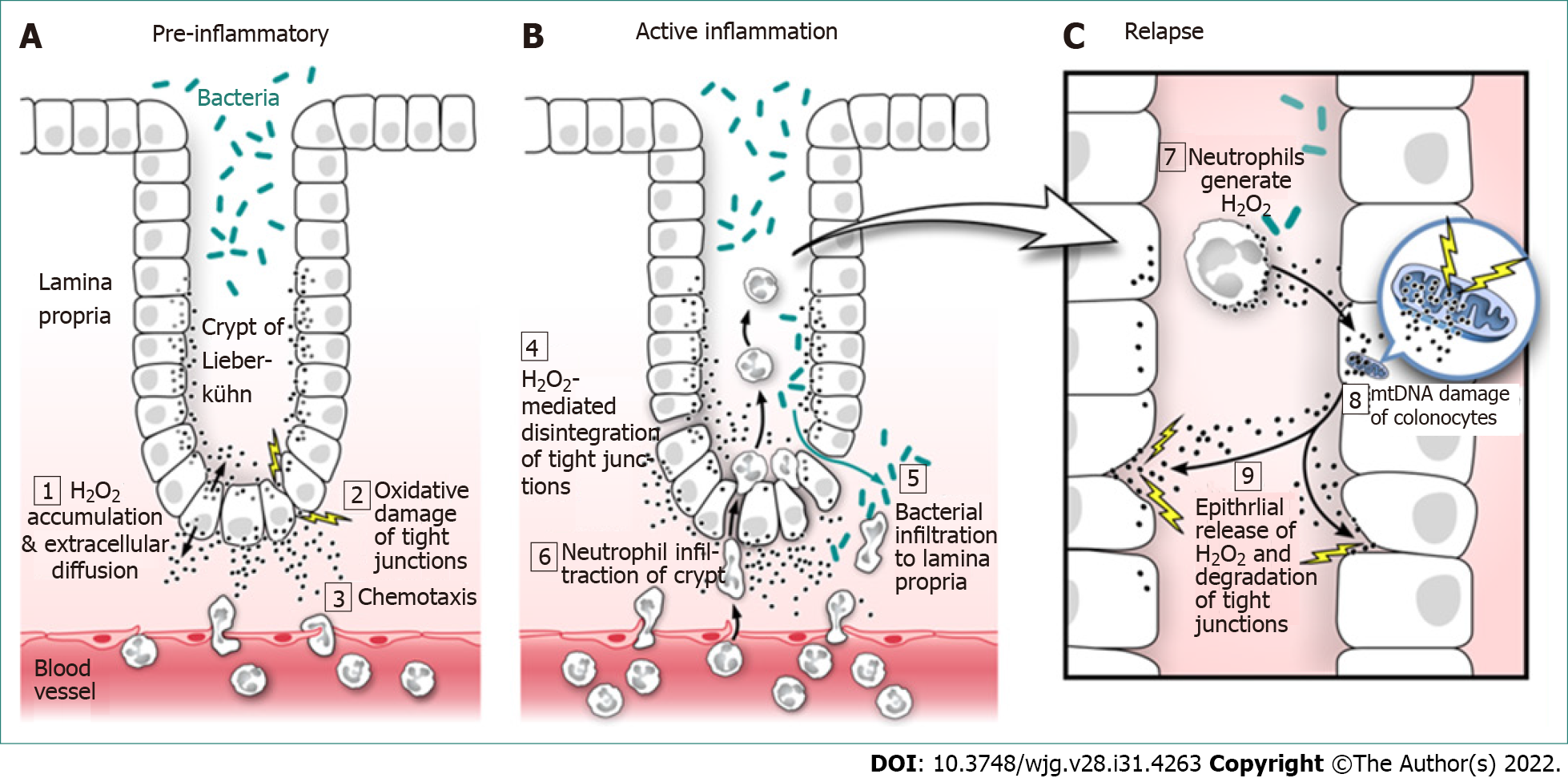Copyright
©The Author(s) 2022.
World J Gastroenterol. Aug 21, 2022; 28(31): 4263-4298
Published online Aug 21, 2022. doi: 10.3748/wjg.v28.i31.4263
Published online Aug 21, 2022. doi: 10.3748/wjg.v28.i31.4263
Figure 1 Ulcerative colitis: Evidence-based pathogenesis and relapse.
A: Pre-inflammatory; B: Active inflammation; C: Relapse. Hydrogen peroxide (H2O2) is produced by all cells of the body, mainly as a toxic by-product of cellular metabolism and must be immediately neutralized to prevent cell damage. If produced in excess by colonocytes (colonic epithelial cells), H2O2 easily diffuses through the cell membrane; 1: To the extracellular space where its unique properties of long life, potent oxidizing power, and the ability to attract neutrophils (neutrophilic chemotaxis) combine to promote oxidative damage of colonocyte tight junctions; 2: While attracting neutrophils into the colonic epithelium; 3: Continued H2O2 exposure leads to oxidative disintegration of tight junctional proteins and increased colonic epithelial paracellular permeability; 4: Increased paracellular permeability promotes bacterial translocation into the sterile lamina propria; 5: And facilitates neutrophil migration up the H2O2 concentration gradient into the crypts of Lieberkühn; 6: Both of which lead to colonic inflammation and eventual ulcerative colitis. Neutrophils exposed to bacteria in the crypts become activated and produce large amounts of H2O2 that diffuses into colonic epithelial cells; 7: Which adds to the already high colonocyte H2O2 load. The increased colonocyte H2O2 oxidizes mitochondrial DNA (mtDNA) introducing genetic mutations that miscode when transcribing for electron transport chain (ETC) proteins; 8: Faulty ETC proteins exhibit additional electron leakage leading to greater H2O2 production creating a vicious cycle of mtDNA damage and ever greater H2O2 production, which contributes to and increases the frequency and severity of relapse; 9: This amounts to a “hard-wired” genetic reprogramming that promotes colonic inflammation as discussed below. H2O2: Hydrogen peroxide; mtDNA: Mitochondrial DNA.
- Citation: Pravda J. Evidence-based pathogenesis and treatment of ulcerative colitis: A causal role for colonic epithelial hydrogen peroxide. World J Gastroenterol 2022; 28(31): 4263-4298
- URL: https://www.wjgnet.com/1007-9327/full/v28/i31/4263.htm
- DOI: https://dx.doi.org/10.3748/wjg.v28.i31.4263









